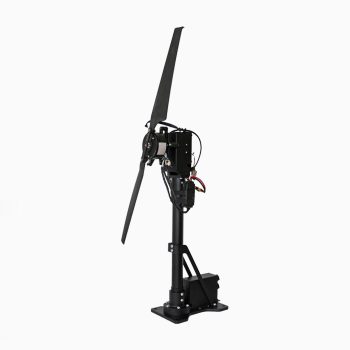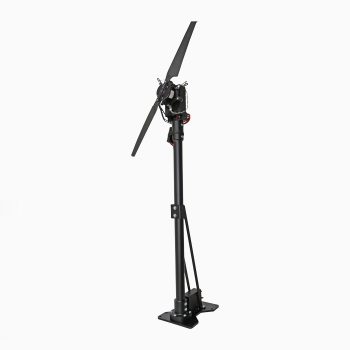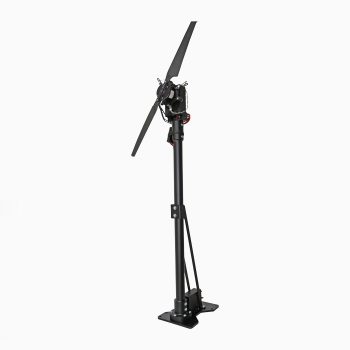Propulsion system maintenance is critical because propulsion systems are essential components of many vehicles and machinery, including aircraft, ships, and industrial equipment. These systems enable these vehicles and machines to move, operate efficiently, and perform their intended functions.
Here are some reasons why propulsion system maintenance is important:
- Safety: Properly maintained propulsion systems are essential to the safe operation of vehicles and machinery. Malfunctioning or poorly maintained propulsion systems can lead to accidents, injuries, and even fatalities.
- Performance: A well-maintained propulsion system will operate more efficiently and effectively, providing optimal performance and extending the lifespan of the vehicle or machinery. Regular maintenance can prevent performance issues and costly breakdowns.
- Compliance: Depending on the industry and regulatory requirements, certain maintenance and inspection procedures may be mandated to ensure compliance with safety standards and regulations. Failure to comply with these requirements can result in penalties and legal repercussions.
- Cost savings: Regular maintenance of propulsion systems can help detect and prevent potential issues early on, reducing the need for costly repairs or replacements. Additionally, a well-maintained system will operate more efficiently, reducing fuel consumption and overall operating costs.
Overall, propulsion system maintenance is important to ensure safe, reliable, and cost-effective operation of vehicles and machinery.
How Often Should You Inspect Propulsion System Components?
The frequency of propulsion system inspections will vary depending on the type of vehicle or machinery, as well as the specific components involved. However, in general, it is recommended to inspect propulsion system components at regular intervals to ensure they are operating correctly and efficiently.
- Here are some guidelines for propulsion system component inspections:
- Follow the manufacturer’s recommendations: The manufacturer of the vehicle or machinery will typically provide recommendations for maintenance and inspection intervals for propulsion system components. It’s essential to follow these guidelines to ensure the equipment is maintained properly and is operating safely.
- Conduct regular visual inspections: Regular visual inspections can help detect potential issues early on. For example, you can inspect for signs of wear and tear, leaks, or loose components.
- Conduct regular performance checks: It’s important to conduct regular performance checks to ensure the propulsion system is operating correctly. This could include checking the fuel efficiency, monitoring vibration levels, or conducting performance tests.
- Conduct inspections after significant events: After significant events, such as extended periods of use, changes in environmental conditions, or any maintenance or repair work, it’s essential to conduct a thorough inspection of the propulsion system components.
Overall, the frequency of propulsion system component inspections will depend on the equipment and the manufacturer’s recommendations. Regular inspections can help ensure the equipment operates safely and efficiently and can help prevent costly breakdowns.
When Should You Replace Worn or Damaged Propulsion System Parts?
Worn or damaged propulsion system parts should be replaced as soon as possible to ensure the safe and reliable operation of the vehicle or machinery. It’s essential to identify and replace damaged or worn parts early on to prevent more severe damage or failure that could lead to accidents, injuries, or costly repairs.
Here are some signs that indicate it’s time to replace propulsion system parts:
Visible damage: Visible damage, such as cracks, dents, or corrosion, is a clear indication that a part needs to be replaced.
Decreased performance: A decrease in performance, such as reduced speed or power, could indicate that a part is worn or damaged and needs to be replaced.
Unusual noises or vibrations: Unusual noises or vibrations could indicate that a part is worn or damaged and needs to be replaced.
Increased fuel consumption: An increase in fuel consumption could indicate that a part is not functioning correctly and needs to be replaced.
Wear and tear: Regular inspections of propulsion system components can help identify wear and tear that could lead to failure. If a component has reached the end of its service life or is worn beyond the manufacturer’s recommendations, it should be replaced.
It’s essential to replace worn or damaged propulsion system parts as soon as possible to ensure the safe and reliable operation of the vehicle or machinery. Regular inspections and maintenance can help prevent damage and identify issues early on, reducing the likelihood of costly repairs or accidents.
How Do You Test and Troubleshoot Propulsion System Performance?
Testing and troubleshooting propulsion system performance involves a series of steps to diagnose and correct issues that may be affecting the performance of the system. Here are some steps to test and troubleshoot propulsion system performance:
- Conduct a visual inspection: Start by conducting a visual inspection of the propulsion system components to identify any obvious signs of wear or damage. Check for loose components, leaks, or any other visual abnormalities.
- Check fluid levels: Ensure that all fluid levels, such as oil or hydraulic fluid, are at the proper levels. Low fluid levels can affect the performance of the system.
- Conduct performance tests: Depending on the type of propulsion system, conduct performance tests to evaluate the system’s performance. This could include acceleration tests, top speed tests, or fuel efficiency tests. Record the results for comparison with the manufacturer’s specifications.
- Monitor vibrations: Monitor vibrations using vibration analysis tools to detect any abnormalities that could indicate a problem with the propulsion system components.
- Check system sensors: Many propulsion systems have sensors that monitor various parameters, such as temperature or pressure. Ensure that all sensors are working correctly and are providing accurate data.
- Review error codes: If the propulsion system has an onboard computer, review the error codes to identify any issues that may be affecting the system’s performance.
- Troubleshoot specific components: If you have identified a particular component that may be causing the issue, troubleshoot that component specifically. For example, you may need to clean or replace a fuel injector or replace a worn-out propeller.
Overall, testing and troubleshooting propulsion system performance involves a combination of visual inspections, performance tests, and component-specific troubleshooting. Identifying and correcting issues early on can help ensure the safe and reliable operation of the vehicle or machinery.





